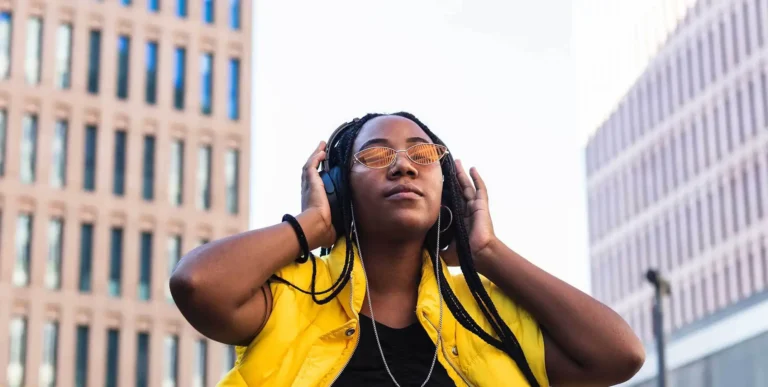If you’re looking to improve your customer retention rate, video marketing might just be your secret weapon.
We’ve talked about it before. Customer engagement positively impacts ROI, with fully engaged customers more likely to stay loyal and spend more money over time. And here’s where video comes: It’s one of the best tools you can use to build and maintain that engagement.
People are drawn to video because it’s dynamic, entertaining and easy to digest, making it the perfect medium to engage your audience. Instead of just telling them why they should stick around, you can use video content to give them a reason to.
Think about it this way. If you had to pledge your loyalty to a particular friend, wouldn’t you choose the friend that regularly connects with you? The one who shares exciting updates, offers helpful advice and adds value to your life? The same goes for your customers.
When it comes to building relationships, sharing information and providing resources, there’s really no better or more effective channel for brands than video marketing. By providing engaging and relevant video content, you become a source of real value — and that’s the kind of relationship that keeps customers coming back.
Here are 5 ways video can be used to improve your customer retention strategy and build a loyal customer base in no time.
1. Deliver Information That Sticks
Ever feel like some important updates or details you share with customers seem to go in one ear and out the other? It’s frustrating — especially when that information is crucial for their experience with your brand.
Post on
What’s a marketer to do? Turn to video, that’s what. And here’s why: 90% of the information humans take in is done visually, with the human brain processing images 60,000x faster than text.
Research also shows that video’s combination of visual and auditory elements leads to more active attention and stronger memory retention. It’s no wonder that 65% of people are visual learners and that nearly 3x as many customers would rather watch a video about a product or service than read about it in an ebook or manual.
Take Vialto’s personalised explainer video as an example. Taxes can be confusing, right? But Vialto simplifies it by creating a video that highlights key data specific to the viewer (in this case, Omar and Stephanie) so they get exactly what they need without having to sift through pages of confusing jargon.
By simplifying complex information and delivering it in a clear, engaging format, Vialto not only made the process easier but also ensured the information was memorable and relevant. This is the kind of approach that not only informs but also builds trust and keeps customers coming back.
The takeaway? If you’re looking to make a lasting impression, do it visually and do it with video. It’s a format that makes a lasting impression — exactly what you need for effective customer retention.
2. Build Brand Transparency
One of the most powerful things video marketing can do is encourage a sense of transparency and trust between your brand and your customers.
When people engage with your content through video, it’s not just about them remembering what you say — it’s about them feeling informed and valued. Customers who are kept in the loop, especially during times of change or uncertainty, are more likely to see your brand as transparent and trustworthy.
In an era where consumers are smarter and more scrutinising than ever, being upfront and clear about your products, services or the changes happening in your company is crucial. Video allows you to communicate directly and clearly with your audience, providing updates, explaining decisions and sharing news in a way that’s easy to understand.
Consider Bupa’s personalised message to Christopher regarding their health insurance renewal. Sent during the peak of the pandemic, Bupa goes beyond the basics, reassuring its customers that any financial benefits arising from COVID-19 will be returned.
What makes this video particularly effective is the human touch added by the voiceover. Hearing a real person speak adds a layer of empathy and authenticity that soothes anxieties and helps build a stronger connection between the brand and the customer.
All in all, using video is an effective method to ensure they feel valued and reassured, especially in the face of complex or sensitive news.
3. Offer Self-Help that Actually Helps
Let’s face it — trying to find help within a company’s labyrinth of call centers and online forums can be incredibly frustrating. We’ve all grimaced after being asked to “please hold,” wondering why it can’t be easier to just find quick, easy answers somewhere.
During support interactions, the last thing any company wants to do is add to a customer’s frustration, especially when they’re already looking for help. After all, 72% of consumers say they’re likely to switch to a competitor after just one bad customer service experience.
So how can you turn this around? By offering self-service solutions that genuinely make a difference. Empower your customers by giving them better tools to help themselves. This means creating resources that are highly visible, cross-channel, easy to understand and very visual.
Videos are an excellent way to achieve this. They can answer common questions, guide users through processes and adapt to different needs, all in a format that’s engaging and clear.
For instance, this customer onboarding video by Mr. Cooper lets viewers navigate to the topics that are most relevant to them, such as how to create an account, make a payment or set up notifications. The cool part? It’s interactive, meaning that customers can quickly find the information they need without having to sift through text-heavy FAQs or call customer service.
The results speak for themselves. Companies that have implemented customer service videos like Mr. Cooper’s have seen impressive outcomes, such as a 73% reduction in call volume, 22x more engagement and +30 NPS points.
When you provide self-service options through video, you’re offering a valuable tool that empowers customers to solve problems on their own. In doing so, you also reduce the strain on your support team, allowing them to focus on more complex issues. It’s a win-win that helps keep customers satisfied and your operations running smoothly.
4. Humanise Your Brand
Think about the brand Geico and it’s very likely you immediately think of a gecko with an English accent. Though insurance and geckos have nothing in common, the Geico Gecko has managed to become the cute, cheery face of the auto insurance giant. What better way to warm people to a relatively cold industry than through a friendly mascot?
In a world where digital interactions often feel detached, adding a personality to your communications can make it easier for your customers to connect with your brand. This is especially important during key customer interactions, such as onboarding, billing or support, where a more personal approach can impact how customers perceive you.
Putting a face to your brand opens the door for a deeper level of brand recognition, engagement, cohesion and familiarity. It turns what could be a dry or frustrating experience into one that feels supportive and personalised.
This BT video, for instance, features 2 agents explaining a customer’s first bill. Being walked through the details by a friendly face helps soften the message, making the information more palatable. It’s a small but significant gesture that shows customers you care about their experience.
By featuring real people in your videos, you can address common customer concerns with empathy and clarity. Whether it’s explaining a complex bill, providing a service update or guiding them through a new feature, these Personalised Videos show that your brand cares.
So if you want to create stronger bonds with your customers and improve retention, consider humanising your brand through video. Whether it’s a spokesperson or a lovable character, putting a face to your brand can make all the difference in building lasting relationships.
5. Get Personal To Boost Customer Loyalty
Let’s take what we talked about in the last point – putting a face on a brand to humanise it – and bring it a step further.
Notice how the examples we’ve explored — like BT’s friendly faces explaining a customer’s first bill and Vialto’s tailored tax explainer video — use personalisation to make a significant impact.
Imagine deploying Personalised Videos during different critical touchpoints in the customer-brand relationship. Onboarding would feel personal and simplified, transaction follow-ups would be relevant, upselling and cross-selling would be individualised.
Companies across industries are already doing this. Barclays, for example, sent a Personalised Video to its current banking customers, promoting their Barclay loan. Because the viewer banks with them, Barclay can show them their provisional loan amount — even before they apply.
The video takes it to another level by also integrating the customer’s name, Clare, into the visuals. Clare’s name appears as a fun surprise in various places, like the license plate of a car she could use the loan to purchase and the side of a home she might renovate. Check it out:
The impact? This use of personalisation makes the offer feel uniquely tailored to Clare, transforming a standard banking offer into a conversation about Clare’s future aspirations and how Barclays can support them.
Make Every Interaction Count
The power of personalisation in video marketing is clear from the examples we’ve seen. It turns ordinary interactions into memorable experiences and strengthens your brand’s relationship with its audience. By making video personal, you not only capture attention but also build lasting customer loyalty. And in today’s competitive market, that’s exactly what you need to stay ahead.
So why not take the next step? Reach out and we’ll show you how Next Gen Video can take your customer retention strategies to the next level.





